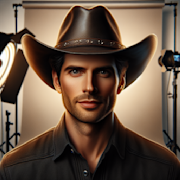The Enigma of Film Editing: Classic Movies and the Cutting Room Floor

In the world of filmmaking, the role of an editor is often underappreciated but crucial to the success of a movie. The editing process can make or break a film, as it has the power to transform raw footage into a coherent and captivating story. In this post, we will delve into the enigma of film editing by exploring the impact of editing on classic movies and the mysteries of the cutting room floor.
The Art of Film Editing
Film editing is an art form that requires a keen eye for detail, a deep understanding of storytelling, and technical proficiency. Editors work closely with directors to shape the narrative, pacing, and emotional impact of a film. Through the manipulation of footage, sound, and special effects, editors can create seamless transitions, build tension, evoke emotions, and ultimately engage the audience on a profound level.
One of the pioneers of film editing was Sergei Eisenstein, a Russian filmmaker known for his groundbreaking montage techniques. Eisenstein believed that the juxtaposition of images could create new meanings and elicit powerful emotional responses from viewers. His theories have influenced generations of filmmakers, shaping the way we perceive cinema today.
Classic Movies and Their Editors
Some of the greatest films in cinematic history owe their success to the skilled hands of talented editors. For example, the iconic film “Casablanca” (1942) was edited by Owen Marks, who deftly weaved together multiple storylines, characters, and emotions to create a timeless masterpiece. Marks’ meticulous editing helped to elevate the film from a simple romance to a complex and multi-layered drama that has stood the test of time.
Another classic movie that showcases the power of editing is “The Godfather” (1972), edited by William Reynolds and Peter Zinner. The film’s seamless transitions, sharp cuts, and precise pacing contribute to its epic scope and emotional depth. Through strategic editing choices, such as cross-cutting between parallel storylines and using silence to build suspense, Reynolds and Zinner heightened the tension and drama of the film, leaving a lasting impact on audiences worldwide.
The Cutting Room Floor
Despite the crucial role of editing in filmmaking, much of the editor’s work goes unnoticed by The General public. Countless hours of footage end up on the cutting room floor, as editors painstakingly select the best takes, trim unnecessary scenes, and rearrange sequences to enhance the overall storytelling. These discarded moments may include outtakes, alternate endings, deleted scenes, and other hidden gems that provide insights into the creative process behind a film.
One of the most famous examples of deleted scenes is from the film “Blade Runner” (1982), directed by Ridley Scott. The director’s cut of the film includes a scene known as the “unicorn dream,” which was originally cut from the theatrical release but later reinstated to add depth to the character development and thematic elements of the story. This decision by the editor fundamentally altered the audience’s perception of the film, demonstrating the impact that editing can have on the final product.
The Legacy of Film Editing
In conclusion, film editing is a multifaceted art form that requires skill, creativity, and intuition. Editors play a crucial role in shaping the narrative, emotional impact, and visual storytelling of a film, often working behind the scenes to craft cinematic masterpieces that resonate with audiences for generations. The enigma of film editing lies in its ability to transform raw footage into a cohesive and compelling story, leaving a lasting impression on viewers and elevating the art of filmmaking to new heights.
Through the exploration of classic movies and the mysteries of the cutting room floor, we can gain a deeper appreciation for the intricate and often unseen work of editors. As we continue to celebrate the art of film editing, let us remember the profound impact that editors have on the cinematic landscape and the enduring legacy of their contributions to the world of cinema.

Alberto Miller
Movie Fanatic
More From Classics Authority Movies

Movie
Butch Cassidy and the Sundance Kid (1969)

Movie
The Power of Classic Documentaries: Capturing Reality on Film

Movie
Good Will Hunting (1997)

Movie
Remembering Paul Newman: The Charismatic Icon

Movie
Apocalypse Now (1979)

Movie
The Art of Costume Design: Influential Styles in Classic Movies





